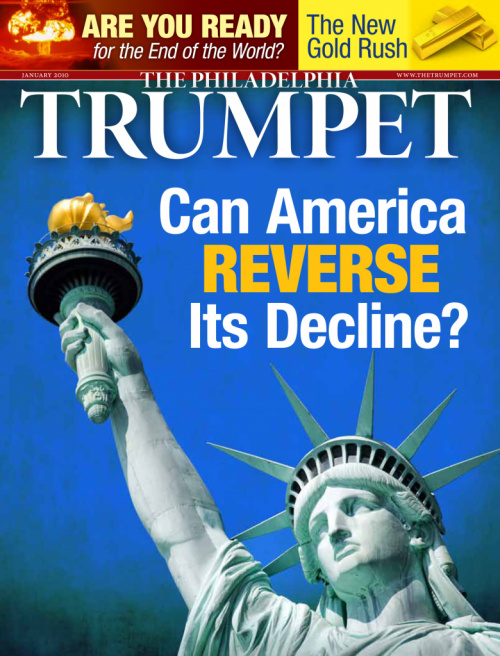The Stampede to Gold
Two hundred metric tons of gold—the largest gold purchase in history. Think 44 Asian elephants. The buyer’s motive was clear: to get away from the dollar. But why did America’s leaders give the okay for the International Monetary Fund to sell America’s gold?
During October, the Central Bank of India bought 200 metric tons of gold from the imf. It is the biggest signal yet that Asian countries are moving away from the dollar, the Financial Times inferred. As he swapped his country’s dollars for hard assets, India’s finance minister was blunt: The economies of the U.S. and Europe have “collapsed.” India was doing what it could to prepare for the coming meltdown.
As the news hit the market, currency and commodity traders thundered into action. Demand for the yellow metal surged as investors wondered if central banks from China, Europe and elsewhere would join the stampede. Which would be the next central bank to trample the greenback? As traders speculated, the price for a single ounce of the precious metal blew past all previous records and hit above $1,100.
The real importance is this: When nations buy gold, it is a not-so-subtle stomp on the dollar.
Back in the Post-Golden Days
Since the collapse of the Bretton Woods monetary agreement, the world has conducted its trade and paid its bills in dollars—not gold. This decision was largely based upon the fact that America had a strong economy, was a major creditor nation with low debts, and that America had a reputation for fighting inflation and defending the dollar’s value.
For years, this experiment worked well. Having the world’s reserve currency meant that the world needed to hold dollars to conduct trade. All this foreign demand for dollars pushed up the value of the greenback. This made foreign imports less expensive. Flush with extra purchasing power, U.S. consumers embarked upon the greatest multi-decade spending binge ever. Standards of living surged.
The U.S. government liked this arrangement too. Whenever the economy slowed down, or the government needed a little more money, it just printed up some more dollars or issued a few more treasury bonds. The world’s dollar demand sopped up the extra money, so America didn’t have to deal with the normally expected side effects of soaring inflation and rising interest rates.
Yet all was not well. As America encouraged the world to collect dollars (the new reserve currency) and dump gold (the old reserve currency), an unforeseen, dramatic reaction occurred.
An overvalued dollar meant that foreign importers began to replace American industry. U.S. manufacturers were forced out of business or they relocated overseas. The U.S. economy radically changed. America’s economy rapidly evolved from being production-based to consumption-based. The nation went from being the world’s creditor to being its largest debtor.
These imbalances took their toll. Over just the past decade, the dollar has lost one third of its value.
So now the world is speeding up its search for a way out from underneath its piles and piles of depreciating dollars. India’s purchase is “a landmark trade,” said Barclays Capital gold specialist Jonathan Spall. It is “a sign for other central banks and sovereign wealth funds.” The dollar exodus is set in motion.
Don’t Forget This Picture
A shift is on—and it is going to completely blindside Washington.
Many people don’t realize that the bullion the imf sold included U.S. gold. Many times over the last decade, the imf has sought to sell its gold and spend the money, but Washington consistently vetoed it—that is, until this last year when the current administration gave the go-ahead.
U.S. politicians don’t understand history. During this, America’s worst time of crisis since the 1930s, as confidence in the dollar is failing, America should be repatriating its gold from the imf—not selling it.
American politicians may have deluded themselves into believing the dollar is better than gold, but the world obviously isn’t convinced. Both China and Russia are very vocal about their desire to increase their gold holdings and move away from the U.S. dollar. But when America’s allies—like India—announce their desire to diversify away from the dollar, America should wake up.
Meanwhile, back at the bank, the imf has announced it will sell another 200 tons. Will Russia, or China—or Europe—get this chunk of American gold?
India’s gold purchase should be a warning to America. Usually Second World nations have to put up their gold as collateral for loans from the First World. Now developing nations are the ones with the gold, and it is America that is relinquishing control.
India now has some mammoth gold reserves—and $6.7 billion less paper money. This bold move is a clear sign that the world is abandoning the dollar and that America’s days as an economic superpower are ending. India’s stampede into gold is a picture we shouldn’t forget.
